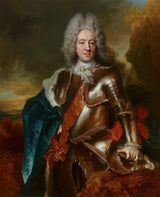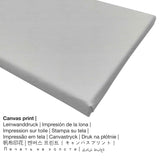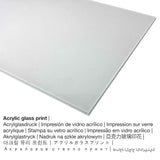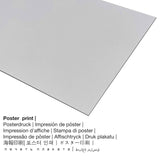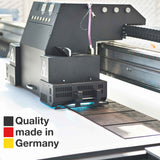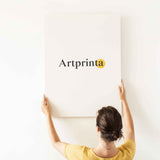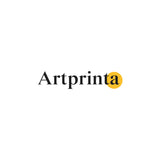Nicolas de Largillière - Eserese nke Willem Hyacinth (1666-1743) - mbipụta nka mara mma
Ụtụ gụnyere. Mbupu gbakọrọ na ndenye ọpụpụ.
Kedu ụdị ngwaahịa anyị na-eweta ebe a?
The masterpiece na aha Portrait of Willem Hyacinth (1666-1743) was created by Nicolas de Largillière. The version of the work of art was made with the size: elu: 129,7 cm obosara: 105,5 cm | elu: 51,1 n'obosara: 41,5 inch. Mmanụ na kwaaji was used by the European painter as the technique for the artwork. This work of art is included in the Mauritshuis's collection, which the Mauritshuis is home to the best artworks of Dutch painting of the seventeenth century. The artpiece, which belongs to the public domain is included with courtesy of Maurithuis, Hague. Ihe kredit nke artpiece bụ: Probably Prince William IV, thence by descent to Prince William V, The Hague; transferred, in or before 1875. Ndozi n'ime Eserese usoro na oke nke 1: 1.2, nke pụtara na ogologo bụ 20% mkpụmkpụ karịa obosara. The painter Nicolas de Largillière was an artist from France, whose art style can mainly be attributed to Baroque. The European artist lived for 90 afọ, a mụrụ n’afọ 1656 ma nwụọ n’afọ 1746.
Original artwork description as provided by Mauritshuis (© Copyright - Mauritshuis - Maurithuis)
Probably Prince William IV, thence by descent to Prince William V, The Hague; transferred, in or before 1875
Data ndabere na ọrụ nka mbụ
| Aha nka: | "Portrait of Willem Hyacinth (1666-1743)" |
| Nhazi nka: | sere |
| Usoro nka izizi: | mmanụ na kwaaji |
| Akụkụ ihe osise izizi: | elu: 129,7 cm obosara: 105,5 cm |
| Ụlọ ihe ngosi nka / ebe: | Maurithuis |
| Ebe ngosi nka: | Hague, South Holland, Netherlands |
| URL webụ: | Maurithuis |
| Ikikere nke ihe osise: | ngalaba ọha |
| Site n'aka: | Maurithuis, Hague |
| Ebe E Si Nweta: | Probably Prince William IV, thence by descent to Prince William V, The Hague; transferred, in or before 1875 |
Banyere onye na-ese ihe
| Aha onye nka: | Nicolas de Largillière |
| okike onye nka: | nwoke |
| Obodo onye nka: | French |
| Ọrụ nke onye na-ese ihe: | onye na-ese ihe |
| Obodo onye nka: | France |
| Ụdị nka: | Baroque |
| Nwụrụ anwụ: | 90 afọ |
| Afọ ọmụmụ: | 1656 |
| Nwuru: | 1746 |
| Obodo ọnwụ: | Paris |
Akụrụngwa ị nwere ike iburu
Maka mbipụta nka ọ bụla anyị na-enye nha & ihe dị iche iche. Ya mere, anyị na-enye gị ohere ịhọrọ n'ime nhọrọ ndị a:
- Akwụkwọ mmado ebipụtara (ihe kwaaji): A poster is a UV printed canvas paper with a nice finish on the surface, which resembles the actual version of the work of art. Please note, that depending on the absolute size of the canvas poster print we add a white margin 2-6cm around the painting in order to facilitate the framing with your custom frame.
- Mbipụta ọla (aluminium dibbond): These are metal prints on alu dibond with an impressive depth effect, creating a contemporary impression by having a non-reflective surface structure. The Direct Print on Aluminum Dibond is the ideal introduction to fine art reproductions manufactured on aluminum. The white & bright components of the original artwork shimmer with a silky gloss but without the glare.
- Mbipụta iko acrylic na-egbuke egbuke (nke nwere ezigbo mkpuchi iko): A glossy print on acrylic glass, which is sometimes referred to as a plexiglass print, makes the artwork into marvellous home décor. In addition to that, it is a distinct alternative option to aluminium or canvas fine art replicas. Your favorite artwork is being custom-made with modern UV direct printing technology. With an acrylic glass art print contrasts plus minor artwork details will be more exposed because of the granular gradation in the picture.
- Kwaaji: A canvas print is a printed cotton canvas mounted on a wood stretcher. Your canvas of this masterpiece will let you turn your custom into a large size collection piece as you know from art galleries. Canvas Prints have the advantage of being relatively low in weight, which means that it is easy to hang the Canvas print without any wall-mounts. Canvas prints are suited for all kinds of walls.
Nkọwa ngwaahịa
| Nkewa edemede: | ọmarịcha nka |
| Usoro mmeghari: | dijitalụ mmeputakwa |
| Usoro mmepụta: | Mbipụta UV ozugbo (mbipụta dijitalụ) |
| Production: | emepụtara na Germany |
| Ụdị ngwaahịa: | mmepụta ihe na-achọ |
| A na-atụ aro iji ngwaahịa eme ihe: | ụlọ mmepụta ihe nka, foto mgbidi |
| Ndozi onyonyo: | usoro eserese |
| Ụdị anya: | ogologo: obosara - 1: 1.2 |
| Ihe: | ogologo bụ 20% mkpụmkpụ karịa obosara |
| Nhọrọ akụrụngwa: | mbipụta ọla (aluminium dibond), mbipụta akwụkwọ mmado (akwụkwọ kwaaji), mbipụta kanvas, mbipụta iko acrylic (nwere ezigbo mkpuchi iko) |
| Nhọrọ nha nke akwa akwa n'elu etiti ihe na-agbatị (mbipụta kwaaji): | 50x60cm - 20x24", 100x120cm - 39x47", 150x180cm - 59x71" |
| Mbipụta iko acrylic (nwere ezigbo mkpuchi iko) nhọrọ nha: | 50x60cm - 20x24", 100x120cm - 39x47", 150x180cm - 59x71" |
| Nhọrọ nke mbipụta akwụkwọ mmado (akwụkwọ kwaaji): | 50x60cm - 20x24", 100x120cm - 39x47" |
| Mbipụta aluminom (ihe alumini debond ihe): | 50x60cm - 20x24", 100x120cm - 39x47" |
| Nhazi mbipụta nka: | adịghị |
Nkwupụta iwu: We try to describe our art products as accurate as possible and to illustrate them visually in our shop. Still, the tone of the printed materials, as well as the imprint may differ marginally from the presentation on the screen. Depending on your screen settings and the quality of the surface, not all color pigments can be printed as realisitcally as the digital version depicted here. Since all fine art prints are processed and printed manually, there might also be minor differences in the motif's size and exact position.
Nwebiisinka © - Artprinta.com (Artprinta)

